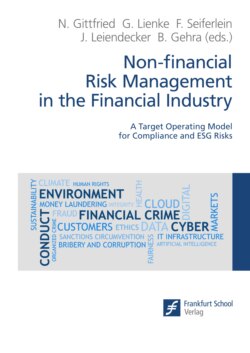Читать книгу Non-financial Risk Management in the Financial Industry - Группа авторов - Страница 75
На сайте Литреса книга снята с продажи.
2.4.2.2.1 Climate change risk
ОглавлениеRegulators have published guidelines and frameworks regarding the management of ESG risks, with a strong focus on climate and environmental risk. The ECB published a comprehensive guide on climate-related and environmental risks in 2020. This guide includes a definition of climate and environmental risks as being commonly understood to comprise two main risk drivers[112]:
physical risk refers to the financial impact of a changing climate, including more frequent extreme weather events and gradual changes in climate, as well as of environmental degradation, such as air, water and land pollution, water stress, biodiversity loss and deforestation;
transition risk refers to an institution’s financial loss that can result, directly or indirectly, from the process of adjustment towards a lower-carbon and more environmentally sustainable economy.
In 2021, the EBA published its report on management and supervision of ESG risks for credit institutions and investment firms. This report provides a comprehensive proposal on how ESG factors and ESG risks should be included in the regulatory and supervisory framework for credit institutions and investment firms.[113] In the UK, the PRA has published a supervisory statement on the management of financial risks from climate change by banks and insurers, with the definitions stated being similar to the EBA definition.[114] The OSFI in Canada also uses a definition of climate change risk that is similar to the EBA definition.[115] In Asia-Pacific, the MAS has issued guidelines on environmental risk management for banks.[116] For this book, we use the ECB definition of climate change risk.
